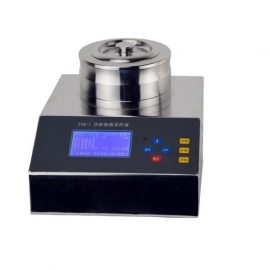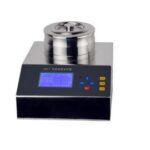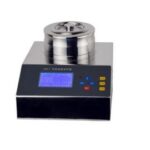
# Microbial Air Sampler: A Comprehensive Guide to Airborne Microorganism Detection
## Introduction to Microbial Air Samplers
Microbial air samplers are essential tools in environmental monitoring, healthcare, and industrial settings. These devices are designed to collect and quantify airborne microorganisms, providing valuable data for assessing air quality and identifying potential contamination sources.
## How Microbial Air Samplers Work
Microbial air samplers operate by drawing a known volume of air through a collection medium, such as agar plates or liquid impingers. The collected microorganisms are then cultured and analyzed to determine their types and concentrations. This process helps in understanding the microbial composition of the air in various environments.
## Types of Microbial Air Samplers
There are several types of microbial air samplers, each suited for different applications:
– Impaction Samplers: These samplers use a high-velocity air stream to impact microorganisms onto a solid surface, such as an agar plate.
– Filtration Samplers: Air is passed through a filter that traps microorganisms, which can then be analyzed.
– Impinger Samplers: These devices collect microorganisms in a liquid medium, which is later cultured or analyzed.
– Electrostatic Precipitators: These samplers use an electric field to charge and collect airborne particles, including microorganisms.
## Applications of Microbial Air Samplers
Microbial air samplers are used in a variety of fields:
– Healthcare: Monitoring air quality in hospitals to prevent infections.
– Pharmaceuticals: Ensuring cleanroom environments for drug manufacturing.
– Food Industry: Detecting airborne pathogens in food processing facilities.
– Environmental Monitoring: Assessing microbial contamination in outdoor and indoor environments.
## Choosing the Right Microbial Air Sampler
When selecting a microbial air sampler, consider the following factors:
– Sampling Volume: Ensure the sampler can handle the required air volume for accurate detection.
– Collection Efficiency: Choose a sampler with high collection efficiency for the target microorganisms.
– Ease of Use: Consider the ease of operation and maintenance of the sampler.
– Regulatory Compliance: Ensure the sampler meets relevant industry standards and regulations.
## Conclusion
Microbial air samplers are indispensable tools for detecting and analyzing airborne microorganisms. By understanding their operation, types, and applications, you can make informed decisions to ensure air quality and safety in various environments. Whether in healthcare, industry, or environmental monitoring, these devices play a crucial role in maintaining healthy and safe conditions.
Keyword: Microbial Air Sampler


